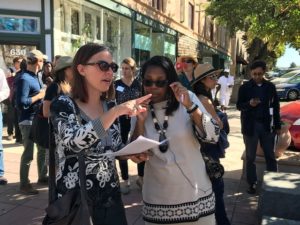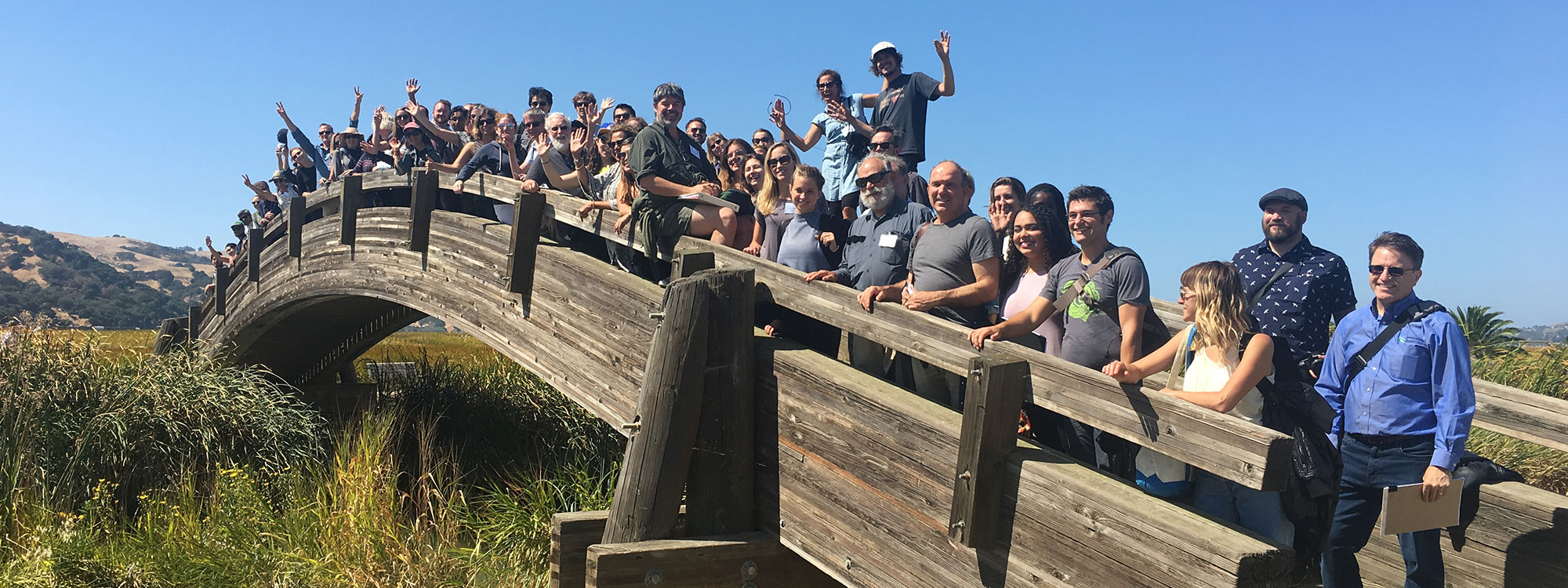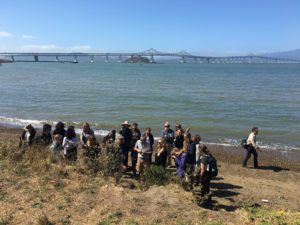Greenbelt Alliance is thrilled to partner with the Bay Area’s Resilient by Design Challenge, an exciting year-long project drawing attention to climate impacts, especially sea level rise, and creating potential responses for areas around the region.
The Bay Area Resilient by Design Challenge
The Challenge is a collaborative research and design project that brings together local residents, public officials and local, national, and international experts to develop innovative solutions to the issues brought on by climate change.
Over the course of the next year, ten teams of engineers, architects, designers, and other experts will work alongside community members to identify critical areas throughout the Bay Area and propose new community-based solutions that will strengthen our region’s resilience to sea level rise, severe storms, flooding, and earthquakes. The result will be ten new implementable projects that offer an imaginative and collaborative approach to resilience.
Greenbelt Alliance Steps Up
Greenbelt Alliance is working alongside the Resilient by Design staff and other partners to plan and coordinate regional tours that enable the ten design teams to learn about the varied landscapes and communities of the Bay Area. Through these tours, design team members are hearing from local experts, elected officials, and community members about current and future issues so that the proposed resiliency projects build upon and reflect local challenges and opportunities.
We’re excited to partner on three tours across our region this fall.
Touring Contra Costa County
In late September, we hosted our first tour in Contra Costa County. Greenbelt Alliance’s East Bay Regional Director Joel Devalcourt led over 70 team members in a day-long tour along the water’s edge. We visited Richmond’s Point Molate, Martinez Shoreline Park, Bay Point Regional Shoreline Park, and downtown Pittsburg. The group heard from over a dozen local experts, including Contra Costa County Supervisor Diane Burgis, about the complex forces shaping the natural and built environments of our shoreline communities—as well as opportunities to grow smartly and combat sprawl development.
The day ended with a panel discussion at Pittsburg’s California Theatre, moderated by KQED Reporter Devin Katayama. Our panel explored resilience from a human angle, investigating issues affecting low-income communities across Eastern Contra Costa County. The conversation highlighted the “suburbanization” of poverty, drawing attention to the ways in which the Bay Area’s housing affordability crisis is driving many low-income residents from areas close to jobs and transit to the farthest edges of our region. Panelists and design experts then discussed how to respond to these dynamics when shaping shoreline resilience solutions.
This article by the San Francisco Chronicle gives a great snapshot of the day and overall challenge.
Visiting Vallejo and Mare Island
In early October, Greenbelt Alliance’s Solano County Regional Representative Amy Hartman led our second tour, focused on Vallejo and Mare Island in Solano County. Design teams kicked off the day with an invigorating walk at the Mare Island Shoreline Heritage Preserve.

The day brought together a stellar group of experts, including local environmental leaders, developers, public agency staff, academics, and elected officials, including Solano County Supervisors Erin Hannigan and Monica Brown.
Greenbelt Alliance will also be coordinating a third tour in the South Bay on October 19th.
What’s Next
The research phase of the Resilient by Design Challenge wraps up this fall. In the first half of 2018, design teams will develop site-specific conceptual design solutions and detailed implementation plans in coordination with community groups and state and local partners
We wish the design teams and the Resilient by Design staff the very best of luck! It’s important and challenging work and we’re excited to be a part of it.





